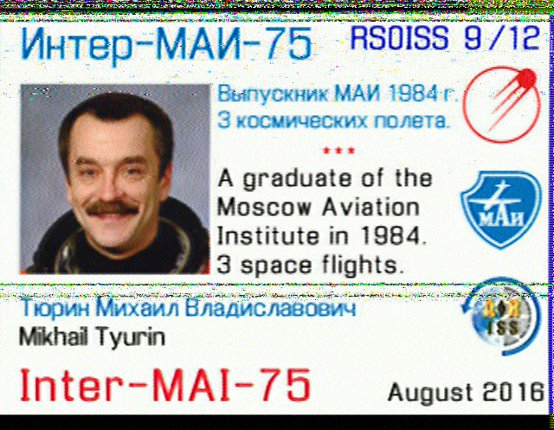It is planned Russian cosmonauts will transmit amateur radio Slow Scan Television (SSTV) images from the International Space Station (ISS) during August 4-5 on 145.800 MHz FM (likely using PD-120). It should be receivable across the British Isles and Europe.
An announcement made July 27 on the ARISS SSTV Blog says:
The final crew schedule for the week of Aug 3-9 was released recently and it showed a MAI-75 activity scheduled for Aug 4 and 5. This is soon after the Space X Demo-2 undock so changes to that event could impact the schedule.
The current dates and times of the planned activity are as follows:
Aug 4 (12:25-18:10 UTC) is setup and day 1 operations.
Aug 5 (08:15-18:25 UTC) is day 2 operations and close out.
This is the Moscow Aviation Institute SSTV experiment that is active for orbital passes over Moscow, Russia.
Mode is likely to be PD-120
Source ARISS STV Blog http://ariss-sstv.blogspot.com/
The ISS puts out a strong signal on 145.800 MHz FM and a 2m handheld with a 1/4 wave antenna will be enough to receive it. Many FM mobile and base station rigs can be switched been wide and narrow deviation FM filters. For best results you should select the filter for wider deviation FM (25 kHz channel spacing). Handhelds all seem to have a single wide filter fitted as standard.
The space agency ESA has released a video ‘How to get pictures from the International Space Station via Amateur Radio’ along with a collection of Tutorial videos explaining how to receive ISS Slow Scan TV (SSTV) pictures for different computers and mobile devices
https://amsat-uk.org/2020/07/08/esa-promote-amateur-radio-iss-sstv/
Read the Raspberry Pi article Pictures from space via ham radio
https://www.raspberrypi.org/magpi/pictures-from-space-via-ham-radio/
ISS SSTV info and links https://amsat-uk.org/beginners/iss-sstv/
What is Amateur Radio? http://www.essexham.co.uk/what-is-amateur-radio
Free UK amateur radio online training course https://www.essexham.co.uk/train/foundation-online/

